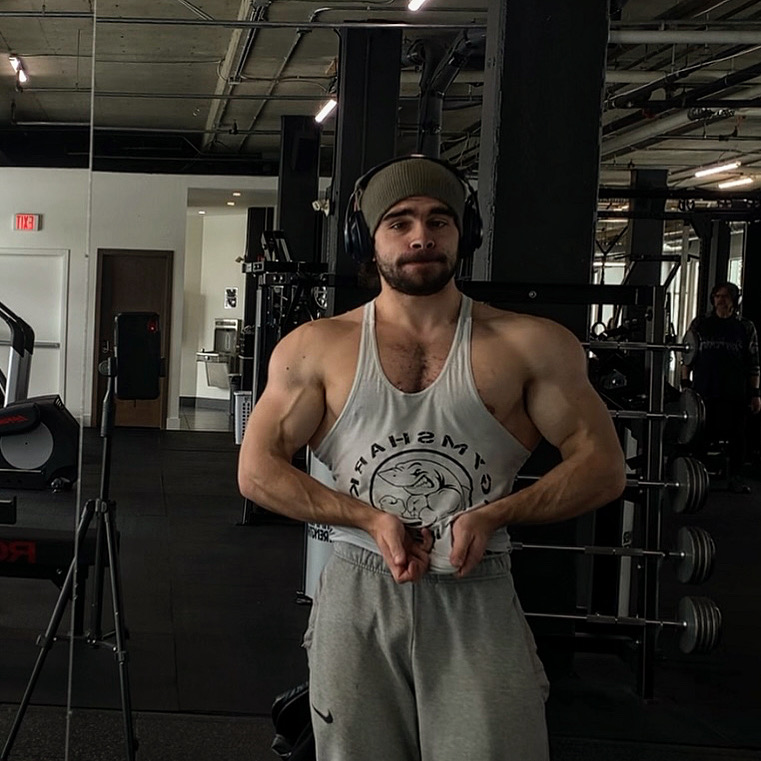Strength vs Hypertrophy Training
I’m sure by now we’ve all seen either the super strong powerlifters squatting a million plates or the jacked-up bros with pecs bigger than most girls. These two titans make up the majority of gym memes nowadays and are often grouped into the same category. However, their training styles are quite different.
By the end of this article, you’ll learn the differences and similarities of these two styles of training. As well as where they both fit into the average gym-goer’s routine. Kick back and enjoy my first-hand encounters with the upper echelons of both modalities.
The Differences

Here I am 6 months into a bulk, hypertrophy style training 5x a week with cardio added in 2x a week.
During this time, most of my compound lifts substituted a barbell (unlike powerlifting) for other implements like dumbbells, machines, and cables. Unlike training for pure, hypertrophy-focused training allows you to select implements that align better with YOUR body. Thus, allowing for better stretches and contractions in the desired musculature.
When it comes to pure strength training, like a powerlifter, implements are reverted back to the classic barbell and other odd objects you find in a powerlifting gym. The difference with a barbell is that the athlete has to manipulate their body around the implement to execute an effective lift. Whereas with hypertrophy training, you can select implements that align better to your specific body.
Other than different implements, the two training styles use different set and rep ranges to achieve their goals. When the goal is to gain muscle, anywhere from the 6-8+ range can be beneficial for hypertrophy to occur. Along with this rep range, intensity usually stays pretty high, aiming to be failing by the time you reach that 6-8+ rep range. You can do this because the recovery time of muscle tissue can be relatively quite quick which allows for training intensity to stay high.
Not to say strength athletes don’t train hard, because they do. Their rep ranges and intensity tend to vary depending on what point in their season they’re in. Typically you’ll see these athletes perform anywhere from 8 reps down to single rep sets, this is because their desired stimulus is different than that of someone who wants to build muscle. This stimulus is more local to the central nervous system and has a greater impact on recovery times, which is why intensity and rep ranges need to vary to help manage fatigue.
Myself, after undergoing a strength peak block to compete at a provincial competition.
Despite having some major differences, these two training styles actually have some similarities and you can mix and match them throughout your gym career.
If you noticed in the last section, there’s about 2-3 reps where strength meets hypertrophy and vice versa. This middle ground can be the perfect area to approach heavier weights than normal and make progress in BOTH areas.
As of right now, during my bodybuilding endeavours, one of my favourite methods to get the best of both worlds is the top-set back-off set method. Typically I implement this at the start of my workouts when I perform my biggest lifts that resemble some of the powerlifting exercises.
The method goes like this, pick a set number of reps in the range of 6-8 (6 is my sweet spot) then work your way up through the weights until you’re ready to perform 1 top set of 6 reps with the HEAVIEST weight you can manage. After that set, up the reps to somewhere in the 10-12 range (12 for a juicy pump) then drop the weight to accommodate for the extra reps.
Using this method you can simultaneously develop some pretty sick strength with some gains to go along with it. But, just like every training methodology, their goals are to streamline whatever goal you have.
Training like a strength athlete is great if you want to get strong relatively fast, not so good if you want to gain muscle quick. Just like hypertrophy training is great to gain muscle relatively fast , not so good for gaining strength quickly.
Understanding what your goals are will help you choose a streamlined approach to it via training. But if someone says you can’t have it all I’d say they’re BS.



